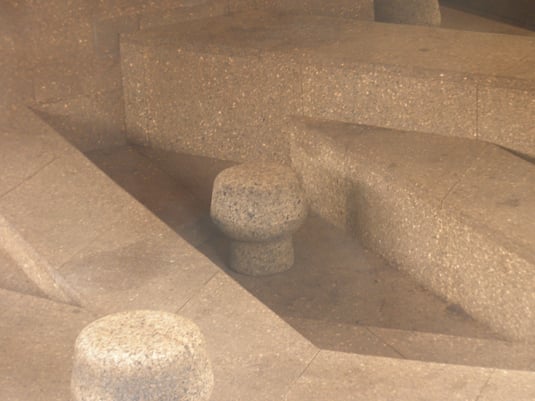
January 2, 2013
Places That Work: London’s Serpentine Gallery Pavilion
The 2012 Serpentine Gallery Pavilion provides both prospect and refuge.
The 2012 Serpentine Gallery Pavilion built in London’s Kensington Gardens and designed by Herzog & de Meuron with Ai Weiwei, is the single best example of prospect and refuge I have ever seen. It’s definitely a place that works. All signs point to human comfort where we’re in a refuge with prospect, accompanied by biophilic design elements. Such spaces are welcoming to our species, possibly because in our evolutionary past they helped secure our survival. What does it mean to say that a space provides prospect and refuge? Prospect is the ability to look out and determine what’s going on in a nearby area; refuge is, well, a sheltered space. Generally, when both are present and at their best, a refuge has a lower ceiling (or some other similar surface) and a view out over an area that has a higher (or no) ceiling and is more brightly lit. When our ancestors lived on the savanna with few tools to protect themselves, this sort of configuration allowed them to relax a little, knowing that they could see trouble approaching.

On the lovely summer day that I visited the 2012 Pavilion, seats in the below ground gallery were in short supply; yet people remained inside for quite some time before moving on. Are you curious about the design of the 2012 Pavilion? “This year’s Pavilion will take visitors beneath the Serpentine’s lawn to explore the hidden history of its previous Pavilions,” reads the website.

Serpentine Gallery Pavilion 2012 by Herzog & de Meuron and Ai Weiwei. Image © Iwan Baan
“Eleven columns characterizing each past Pavilion and a twelfth column representing the current structure…support a floating platform roof 1.5 metres above ground. The Pavilion’s interior [is] clad in cork, a sustainable building material chosen for its unique qualities and to echo the excavated earth. Taking an archaeological approach, the architects have created a design that will inspire visitors to look beneath the surface of the park as well as back in time across the ghosts of the earlier structures.” And find refuge as well as prospect.
Sally Augustin, PhD, is a principal at Design with Science . She is also the editor of Research Design Connections and the author of Place Advantage: Applied Psychology for Interior Architecture (Wiley, 2009). She can be reached at [email protected] This post is part of a series of Places that Work.





